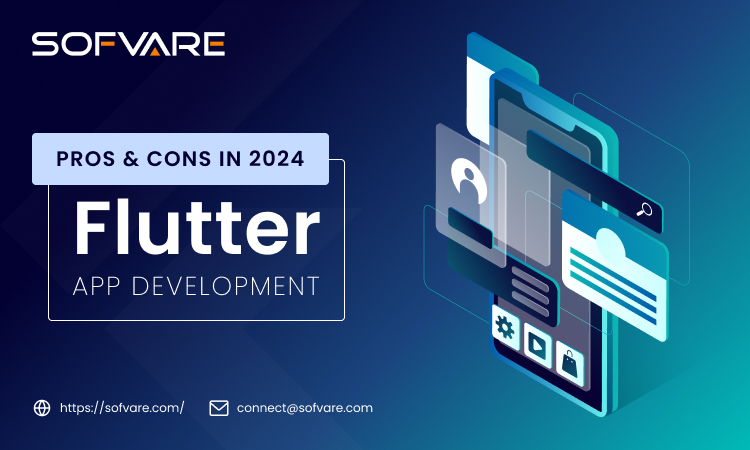Flutter App Development Pros and Cons in 2024
Picture this: You intend to have a mobile app for your brand. However, you do not want to get it confined to either one of the players – Android or iOS platform. So, you want an app that would work across platforms.
Can you relate to the scenario mentioned above? You are not alone. Many companies are on the same bandwagon. It is where the Flutter framework comes into action to help companies build apps compatible with different platforms. However, the question is – how worthwhile is the Flutter framework? What are its pros and cons? Is Flutter the best way to develop apps workable across platforms? Read on to clear all your ifs and buts around the Flutter framework. However, before that, let’s understand how this framework functions.
Flutter: How Does it Function?
Flutter was launched by Google in 2017. It serves as an open-source framework for creating apps that work on Android and iOS using a single codebase – a boom for Flutter App Development Services in the market.
Flutter supports Dart programming language that enables developers to create reliable apps. It is compatible with Android Studio. Also, it supports videos and ads within the content.
For devices that operate on both iOS and Android, Flutter is no less than an SDK (software development kit). Simply put, Flutter is more of an SDK with all the required elements that can be used to build apps that can operate across platforms.
Although Flutter offers a wide range of functionalities and benefits, it also has its share of advantages and shortcomings in place.
Let’s take you through the pros and cons of Flutter in the context of 2024! Hopefully, it will help you decide if or not it is the right choice for your brand.
Flutter Framework: The Pros
Here are the top benefits of the Flutter framework:
Use of a single codebase: It won’t be an exaggeration to say that Flutter rules the roost when it comes to cross-platform mobile app development. One of its best advantages is – it leverages a common codebase across platforms. It includes Android, iOS, Linus, MacOS, and Windows. If you are looking for enhanced desktop development, Flutter version 4 is coming right next.
Get an SDK-like feel: As already told, Flutter offers an SDK-like experience to work on. It offers a wide range of tools for developers working on back as well as front-end development. Moreover, it supports different types of programming languages, including Dart, C++, Java, and JavaScript. Here are the highlights of the framework:
• It offers command-line agencies to create, test, and compile apps
• For app testing, profiling, and debugging, it has Dart DevTools
• It features headless test runners for Linux, Windows, and Mac
Experience performance at its best: Flutter is loved for its heavy-duty rendering engine. It makes use of the 2D canvas SKIA to closely mirror native apps. When using this framework, developers do not need an abstraction layer between device hardware and UI. It ensures enhanced performance.
Get amazing UI widgets: Offering an inviting and intuitive UI is another reason why developers prefer using Flutter. The framework has an extensive batch of UI gizmos, providing tailorable and functional elements, such as space for text, user input, and buttons.
Makes the development process quick: Flutter accelerates the process of development due to its SDK features. Also, it comes with a hot reload feature. This feature allows developers to test minor changes without having to do complete recompilation.
Flutter Framework: The Cons
Take a look at the pointers below to understand the cons of Flutter:
Limited use outside network: One of the possible weaknesses of Flutter is – its one-of-its-kind programming language. Although it does not have any inherent defects, its restricted usage outside the framework makes finding experienced developers difficult.
Complications with maintenance: When it comes to updating the Cupertino widgets and material elements for Android and iOS, Flutter demands extreme carefulness. It complicates the process of maintenance.
Larger apps: Flutter uses its personal UI canvas, rendering engine, and components. It can make the app sizes larger, resulting in compatibility issues.
Lack of creative freedom: As you already know, Flutter is no less than a comprehensive SDK. Isn’t it? It can be a con sometimes while dictating the choice of tools, design decisions, and workflow. It is likely to constrain what we call creative freedom in light of app development.
To Conclude
Now that you are familiar with how Flutter works and its pros and cons, choose the best provider of Flutter App Development Services to create highly functional and interactive apps offering flexible UI designs and native performance. When choosing a service provider, make sure to check their credibility and reputation in the market beforehand. It will help you get best-in-class products without having to worry.

